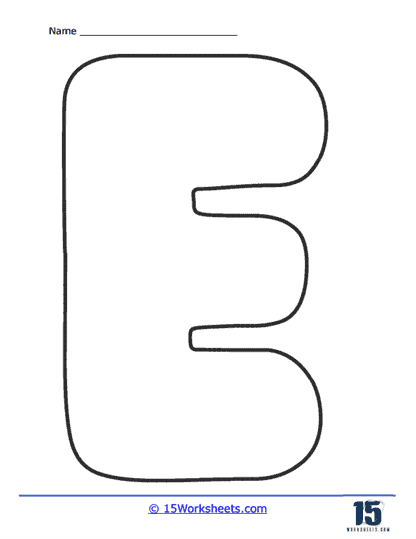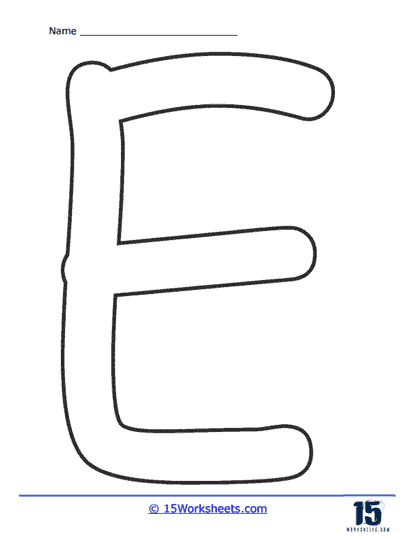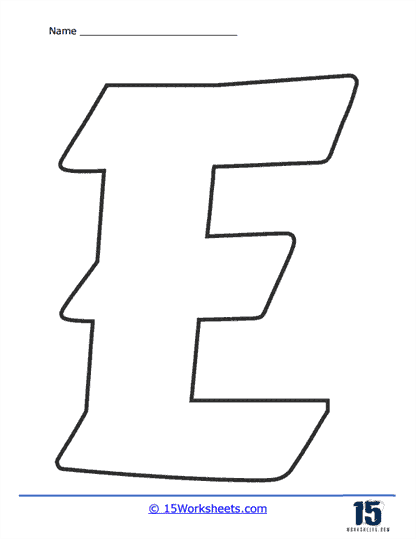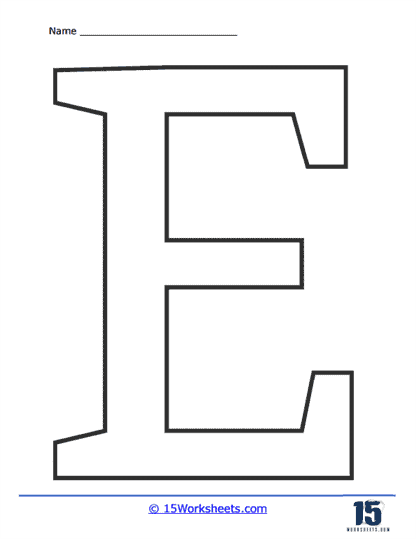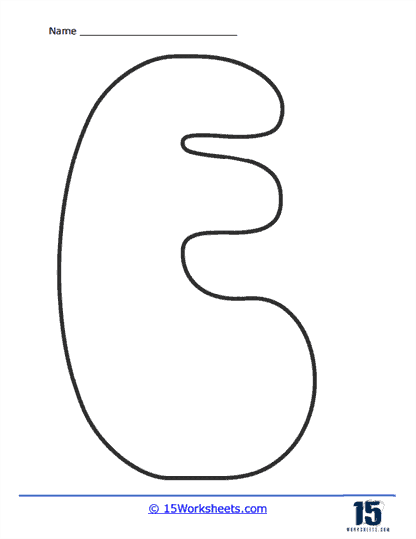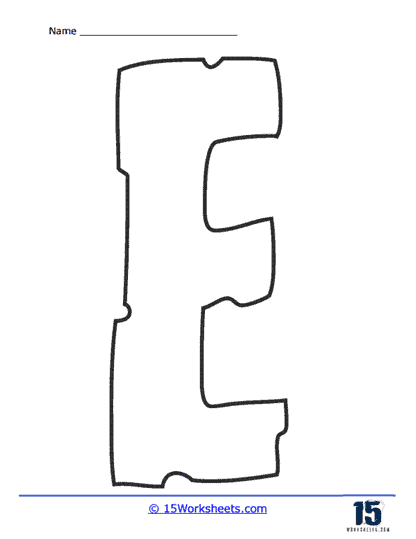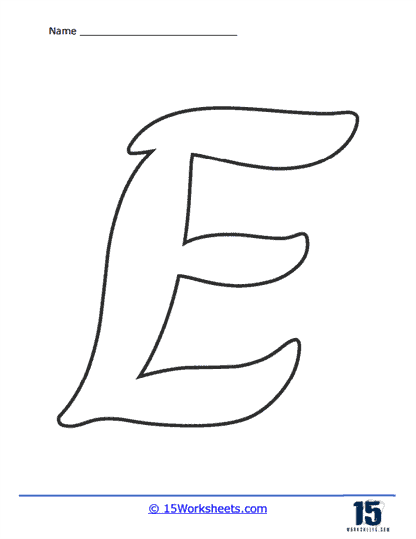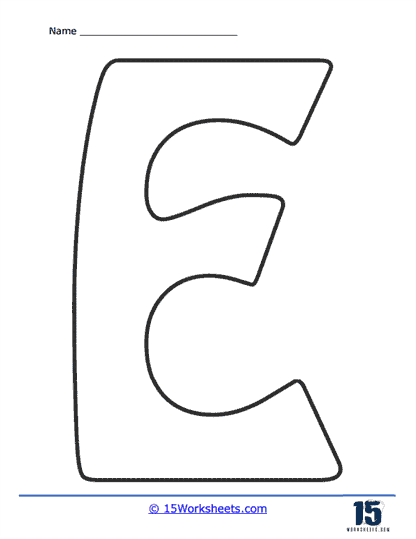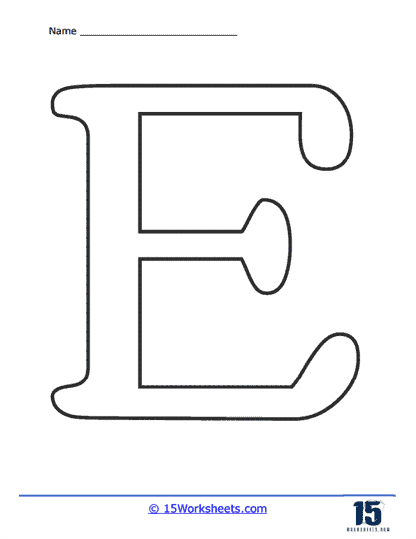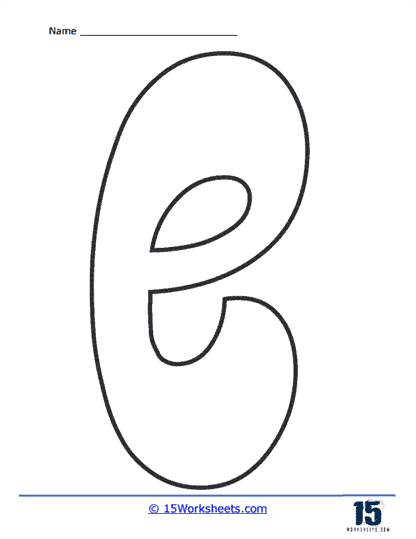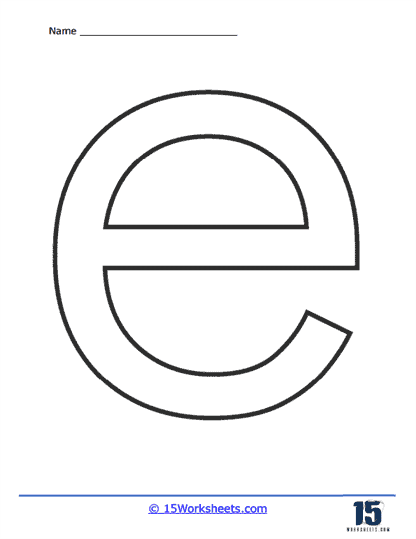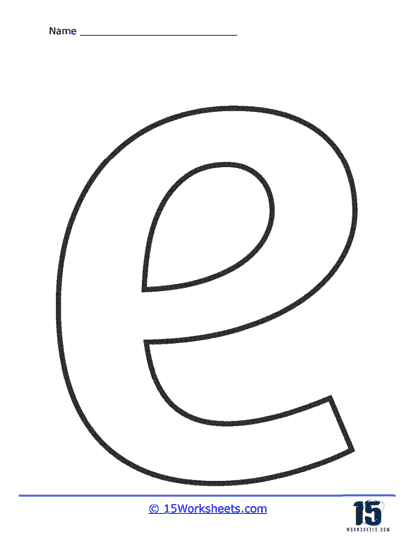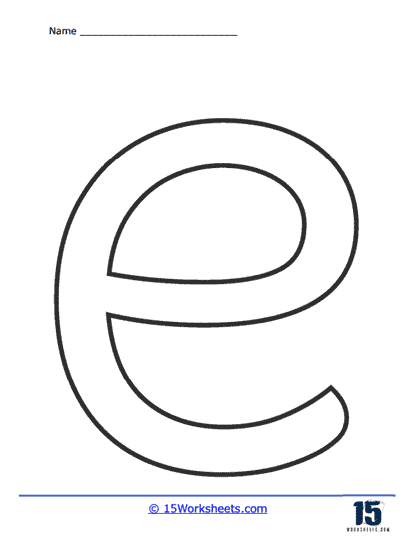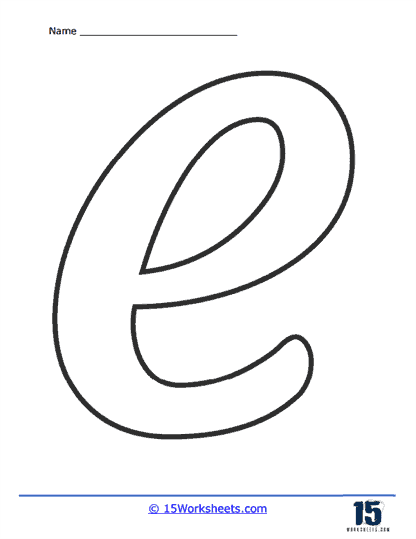Bubble Letter E Worksheets
All About These 15 Worksheets
By intertwining artistic elements with fundamental literacy practices, Bubble Letter E worksheets offer a holistic approach to language arts learning. They cater to different learning styles, from the visual learner to the tactile one, ensuring comprehensive skill development in a fun and interactive manner.
The Benefits of These Worksheets
Letter Familiarity and Recognition
The bubble letter “E” immediately captures visual engagement with its distinct and enlarged shape. As students interact with this unique form, they strengthen their ability to recognize and distinguish the letter from others, a foundational skill in reading. Alongside this visual engagement, worksheets can reinforce phonetics by introducing words that emphasize the “E” sound, solidifying the connection between the letter’s visual representation and its phonetic sound.
Handwriting and Fine Motor Development
Incorporating handwriting and fine motor skills into the learning process is essential. Tracing the contours of the bubble “E” aids students in understanding its structure, even though bubble letters are stylized. This practice can indirectly enhance a student’s handwriting with regular letters. Additionally, drawing and coloring within the outlines of the bubble letter “E” refine fine motor skills, a critical component for effective handwriting.
Vocabulary Expansion
Expanding one’s vocabulary is a continuous journey, and the bubble letter “E” contributes to this endeavor. By introducing words that start with or contain the letter “E” in its bubbly form, students have the opportunity to broaden their vocabulary. Activities like matching these words to images or incorporating them into sentences further embed these new terms into their memory. For more advanced students, exploring synonyms and antonyms can deepen vocabulary comprehension.
Creative Expression and Interpretation
Encouraging creative expression and interpretation is an integral part of language development. Students can be inspired to decorate the bubble “E” with patterns, themes, or imagery related to “E” words, such as “elephant” or “earth,” merging artistic expression with word recognition. Story crafting exercises, utilizing a list of “E” words in bubble letters, challenge students to create narratives that enhance their creativity and sentence formation skills.
Spelling and Phonics
Spelling challenges take on a new dimension with bubble letters. Presenting “E” words in this format, with missing letters for students to complete, reinforces their spelling skills. Furthermore, the letter “E” can possess different sounds, as in “egg” and “beet.” Exercises designed to differentiate these sounds can enhance phonetic understanding.
Concentration and Focus
Activities involving filling in or decorating bubble letters demand attention to detail, fostering students’ focus and concentration – skills that are crucial for reading longer texts or comprehending intricate storylines.
Engagement and Motivation
The novelty of bubble letters offers a refreshing departure from standard language arts worksheets, injecting excitement and enthusiasm into the learning process, particularly for students who may be feeling disengaged.
Contextual Learning
Utilizing the bubble letter “E” as a starting point for forming sentences serves a dual purpose. It aids in grammar, structure, and contextual vocabulary usage while also encouraging students to apply their knowledge in a practical context.


